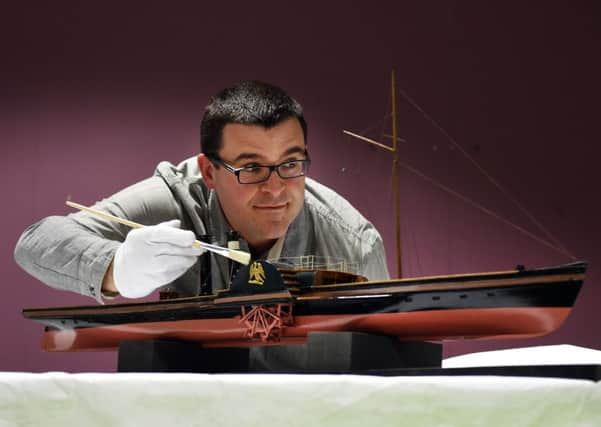The real Rhett Butlers of the blockade go on show


A new display entitled Blockade Runners which highlights Glasgow’s role in the American Civil War of 1861-1865 has opened at the Riverside Museum.
The exhibition coincides with the 150th anniversary of the assassination of US President Abraham Lincoln at the end of the civil war and explores the vital part Clyde-built ships played in running the naval blockade of the Confederacy.
Advertisement
Hide AdAdvertisement
Hide AdThe city of Glasgow profited greatly from new ship orders but many Glaswegians opposed the trade, which rose from a war that had its origins in the difficult issue of slavery.
The Confederate coast of America, from Texas to Virginia, was under naval blockade from the Union forces who were attempting to strangle the economic and military capacity of the southern states.
After four years of combat that left over 600,000 Union and Confederate soldiers dead and destroyed much of the South’s infrastructure, the Confederacy collapsed and slavery was abolished.
Through related objects, interpretation panels and digital displays, Blockade Runners continues Riverside Museum’s philosophy of tackling controversial subjects head on.
Advertisement
Hide AdAdvertisement
Hide AdItems associated with the trade and Glasgow’s involvement highlights the exact nature of the blockade as well as the impact it had on the city and the UK as a whole.
Chair of Glasgow Life, councillor Archie Graham, said: “This thought-provoking display is a wonderful new addition at Riverside.
“It charts how Glasgow profited from converting and building ships for use during the American Civil War but, importantly, it challenges visitors to think at what cost this profit was made.
“While many made huge fortunes from the trade in blockade running ships, there was great opposition to supporting the Southern States due to the issue of slavery, which was banned in the British Empire in 1833.”